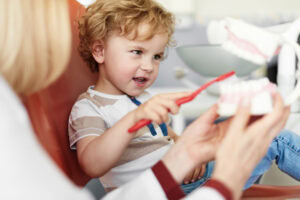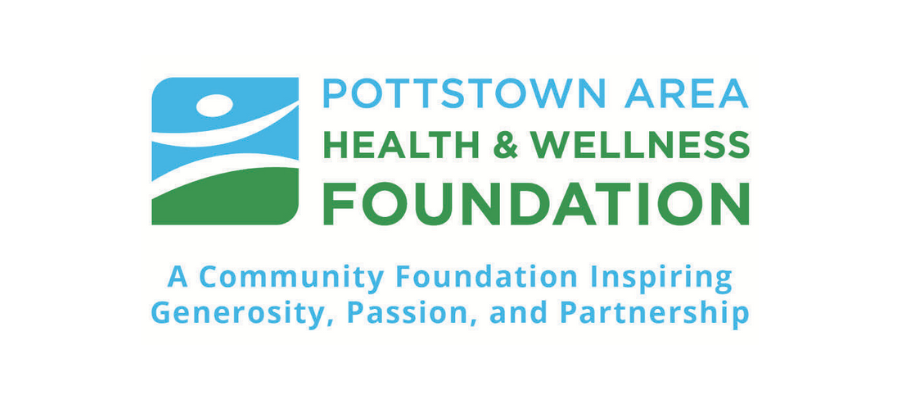Brushing Up on Kids’ Dental Health

Forty percent of children experience tooth decay by kindergarten. National Children’s Dental Health in February reminds us to brush up on proper oral hygiene. Start young to develop positive habits early. Good dental health can prevent diseases and improve overall health for life.
The Facts
Despite being highly preventable, tooth decay is a chronic disease common in U.S. youth. Children as young as two to five years old typically have three primary (“baby”) teeth with cavity fillings, according to the National Institute of Dental and Craniofacial Research. Although many shrug off this statistic because these teeth are eventually replaced by permanent teeth, primary teeth remain for about eight to 10 years. Their health is critical for chewing, language development, and a confident smile. In addition to tooth decay and gum disease, an unhealthy mouth can lead to more bacteria in the bloodstream, triggering other illnesses.
If all this does not inspire parents to encourage healthy brushing habits, kids who suffer from poor oral health are three times more likely to miss school because of tooth aches and related issues. The result of poor oral hygiene is costly, economically and developmentally. And, it can be downright physically painful.
The First Dental Visit
Finding a pediatric dentist should be a top priority among parents-to-be. Once you determine a trustworthy pediatrician, perhaps they can recommend a pediatric dentist. These dentists are specialists who completed an additional two to three years of training focused on the oral health of children.
The American Dental Association recommends a baby visit the dentist after the first tooth appears and no later than their first birthday. A general exam will be performed to check the mouth for injuries, cavities, and any other concerns. Even if your child does not yet eat solid foods, liquids (including milk, formula, and especially juice) pooling in baby’s mouth can cause decay.
After the exam, the dentist will clean the baby’s teeth and gums, and share tips for good dental care. This is an ideal time to address issues like pacifier use, thumb sucking, and teething. Although the dentist cannot magically eliminate rites of passage like sore teething (which somehow often peak during the earliest morning hours), they can advise on what is normal, so sleep-deprived parents know what to expect.
If these visits are approached as fun, comfortable experiences, they can be happily anticipated throughout childhood. This makes it easier to accomplish those biannual cleanings/check-ups. Done properly, your child may even request inviting their dentist for dinner. (It has happened!)
Dental Care for Everyone
Healthcare visits can be expensive. And dental visits often have less insurance coverage than other doctor appointments. For some, this makes dental care unaffordable. Quality, low-cost dental care is available for anyone in our community thanks to grants provided by PAHWF to Community Health & Dental Care (CHDC). Currently, CHDC has five convenient locations where they accommodate all financial backgrounds. They even provide free transportation, if needed.
Children in families with low incomes were shown to be twice as likely to have decay in their primary teeth as those from families with high incomes, according to a National Health and Nutrition Examination Survey. PAHWF is proud to support opportunities to bridge that gap.
Healthy Habits for Happy Mouths
Good oral hygiene begins at home. When children are young, they love to copy adult behavior, especially their parents (who at that stage are still considered “superheroes”). Model proper brushing and flossing habits. Make dental care a fun time of sudsy paste and singalongs.
- Begin using a soft finger toothbrush when a child’s first tooth breaks through the gums. A soft, damp washcloth also can be used. As a twofer, this helps soothe sore gums during teething.
- Make twice-daily brushing nonnegotiable. A night off from brushing should not be used as a reward.
- Have your child help choose a toothbrush and toothpaste. Let them show their personality by picking their favorite characters, colors, and toothpaste flavors.
- Brushing timers, often sold with kids’ toothcare items, help ensure a thorough job. Two minutes of brushing is often the standard. Make it fun by incorporating music, telling a short story (end on a cliffhanger to help anticipate the next brushing), or rewarding with stickers.
- Limit toothpaste until they learn not to swallow it. Then, only use a pea-sized amount.
- Supervise kids under six years old to ensure quality brushing and prevent swallowing toothpaste.
- Introduce flossing once a child’s teeth touch.
- Schedule professional dental cleanings/check-ups every six months.
- Replace toothbrushes as soon as bristles fray (approximately every three months) or after an illness, especially one like strep throat.
Other Considerations
Help your children by limiting sugary foods and beverages. Avoid raising kids with a “sweet tooth.” In dental speak, this translates as kids with cavities. Studies continue to show the dangers of sugar to our physical health, beyond teeth and gums, and our mental well-being. Encourage healthy choices like veggies and dip, cheese and crackers, and fresh fruit for a sweet treat. If you do allow a candy indulgence, teach your kids to follow it up with a full cup of water.
If masking to prevent the spread of germs, be sure to replace often with a clean mask. Also, stay hydrated. Mask mouth is a real issue brought on by extensively wearing a mask. This can cause a dry, stale environment, which increases mouth bacteria and may lead to tooth decay.
Creating healthy habits while kids are young is the best gift you can give them. Adding a little time daily for dental care makes this a natural part of everyday life. As they grow, brushing and flossing will be done without hesitation—just like any other ritual. Now may even be the time to introduce mindful breathing and other self-care. It is never too early to nurture a healthier self.
Sources
National Institute of Dental and Craniofacial Research
